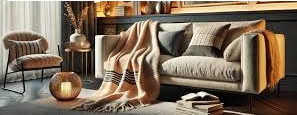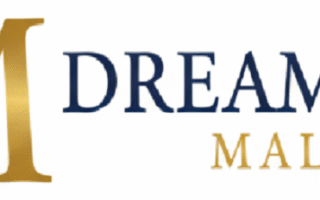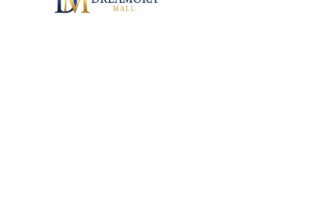Should you invest in luxury sheets and pillowcases or stick with affordable options in 2025? Explore guider reviews, expert comparisons, buying factors, and pro tips to choose the best bedding for comfort, durability, and style.
Introduction
The bedding market in 2025 is more exciting than ever. Choosing between luxury and affordable sheets and pillowcases is no longer just about budget. Comfort, material innovation, durability, and lifestyle all influence decisions. Some buyers prefer investing in premium fabrics for long-lasting comfort. Others look for affordable yet stylish options that offer convenience and value.
This comprehensive guide explores both sides. We review materials, benefits, drawbacks, and shopping tips. Whether you love the elegance of silk or the practicality of microfiber, you’ll find guidance here. Our goal is to help you choose bedding that suits your lifestyle and budget in 2025.
Understanding Luxury Bedding in 2025
Luxury bedding represents the high end of comfort and quality. These products often use natural, rare, or high-thread-count fabrics. Egyptian cotton, silk, bamboo, and linen dominate this category. Luxury sheets and pillowcases are designed to feel soft, look elegant, and last longer.
Key Materials in Luxury Sheets and Pillowcases
- Egyptian Cotton: Known for its long fibers, offering smooth texture and durability.
- Supima Cotton: American-grown premium cotton with exceptional softness.
- Silk: Luxurious, hypoallergenic, and temperature-regulating.
- Linen: Breathable and stylish, perfect for warm climates.
- Bamboo: Eco-friendly, antibacterial, and silky smooth.
Advantages of Luxury Bedding
- Long-lasting durability with proper care.
- Superior softness and breathability.
- Hypoallergenic options for sensitive skin.
- Elegant finishes that enhance bedroom aesthetics.
- Eco-conscious choices with organic certifications.
Drawbacks of Luxury Bedding
- High initial investment.
- Special washing and care requirements.
- Some fabrics wrinkle easily (like linen).
- Not always practical for families or frequent replacements.
Exploring Affordable Bedding in 2025
Affordable bedding options have significantly improved in quality. Modern manufacturing has introduced better microfiber, cotton blends, and polyester fabrics. Today’s budget sheets are softer, more durable, and often designed to mimic luxury fabrics.
Popular Materials in Affordable Sheets and Pillowcases
- Microfiber: Lightweight, wrinkle-resistant, and soft.
- Polyester Blends: Cost-effective and durable.
- Basic Cotton: Breathable, budget-friendly, and easy to maintain.
- Brushed Microfiber: Extra softness with a cozy feel.
Advantages of Affordable Bedding
- Budget-friendly and widely available.
- Easy to wash and quick to dry.
- Wrinkle-resistant and low maintenance.
- Good for frequent style changes.
- Families and students find them practical.
Drawbacks of Affordable Bedding
- Shorter lifespan compared to luxury fabrics.
- May trap heat and reduce comfort.
- More prone to pilling and fading.
- Lower thread counts affect softness.
Luxury vs Affordable: Side-by-Side Comparison
| Feature | Luxury Sheets & Pillowcases | Affordable Sheets & Pillowcases |
| Material Quality | Egyptian cotton, silk, linen | Microfiber, polyester blends |
| Durability | Lasts years with care | May need replacement sooner |
| Comfort | Superior softness and breathability | Comfortable but may trap heat |
| Maintenance | Often requires delicate care | Easy machine wash |
| Cost | Higher initial investment | Budget-friendly |
| Style Options | Elegant and premium finishes | Variety of trendy designs |
| Eco-Friendliness | Often organic and sustainable | Some synthetic, less eco-conscious |
How Bedding Affects Sleep Quality
Your choice of sheets and pillowcases directly impacts sleep. Luxury fabrics regulate temperature and wick away moisture, improving rest. Affordable options provide comfort but may lack breathability. Overheating or rough textures can disturb sleep cycles. A restful night depends on matching bedding to your climate and personal needs.
Market Trends in Bedding for 2025
- Eco-Friendly Fabrics: Bamboo and organic cotton are in high demand.
- Smart Bedding: Temperature-regulating fabrics with built-in cooling features.
- Bold Colors & Prints: Affordable bedding offers trendy designs for style enthusiasts.
- Minimalist Luxury: White, beige, and neutral shades dominate luxury markets.
- Hybrid Options: Mid-range sheets with luxury-like feel at affordable prices.
Pro Tips for Buying Sheets and Pillowcases in 2025
- Don’t rely only on thread count check fiber quality.
- Buy certified organic fabrics when possible.
- Choose breathable fabrics for hot climates.
- Invest in two sets to extend bedding life.
- Consider skin sensitivities when selecting fabrics.
- Always read care labels before washing.
- Rotate sheets weekly to maintain freshness.
Care and Maintenance Tips
- Wash sheets every 7–10 days.
- Use mild detergents to protect fabric fibers.
- Avoid high heat during drying.
- Store bedding in cool, dry places.
- For silk or linen, use gentle wash cycles.
Expert Guider Review
Luxury bedding is ideal for those seeking long-term comfort and elegance. Affordable bedding remains practical, especially for everyday use or frequent replacements. In 2025, the gap between luxury and affordable options is narrowing thanks to innovation. Your choice should reflect lifestyle, budget, and personal comfort priorities.
Frequently Asked Questions (FAQs)
Q1. Is high thread count always better?
No. Fiber quality matters more than thread count. Egyptian cotton with 400 threads can feel softer than cheap 1000-thread alternatives.
Q2. How often should I replace sheets?
Luxury sheets can last 5–10 years with care. Affordable sheets may need replacing every 1–3 years.
Q3. Are bamboo sheets better than cotton?
Bamboo sheets are eco-friendly, breathable, and antibacterial. Cotton remains durable and versatile. Both are excellent choices.
Q4. Can affordable sheets feel like luxury?
Yes. Brushed microfiber and cotton blends in 2025 offer improved softness close to luxury feel.
Q5. Which bedding is best for hot sleepers?
Luxury fabrics like linen, bamboo, and Egyptian cotton regulate temperature better.
Q6. Should I buy sheets online or in-store?
Both options are fine. Online stores offer variety, while in-store allows you to feel the fabric.
Q7: Are luxury sheets really worth the price?
Yes, they offer unmatched comfort, durability, and elegance. A good set can last nearly a decade.
Q8: Can affordable sheets still feel luxurious?
Absolutely. Microfiber and brushed cotton can mimic luxury softness for a fraction of the cost.
Q9: What’s the best bedding material for hot sleepers?
Bamboo and Egyptian cotton they’re breathable, cooling, and moisture-wicking.
Q10: How often should I replace sheets and pillowcases?
Luxury sheets: every 5–10 years. Affordable sheets: every 1–2 years.
Q11: What’s a good middle ground?
Hybrid fabrics (like bamboo-cotton blends) provide eco-friendliness, comfort, and affordability.
Conclusion
In 2025, both luxury and affordable sheets and pillowcases deliver value in different ways. Luxury options bring unmatched comfort, style, and longevity. Affordable choices offer practicality, easy care, and budget-friendly solutions. The best decision depends on your personal needs, lifestyle, and budget.
Investing in bedding means investing in your sleep and health. Whether you choose high-end Egyptian cotton or practical microfiber, prioritize comfort and quality. After all, restful sleep remains priceless.
When choosing between luxury and affordable bedding in 2025, the decision depends on your priorities, lifestyle, and budget.
✨ Luxury Sheets → Offer long-lasting elegance, superior comfort, and premium quality.
✨ Affordable Sheets → Provide budget-friendly versatility, trendy designs, and easy care.
👉 The smart move? Mix both worlds. Invest in luxury essentials (like pillowcases or a fitted sheet) for long-term comfort, while keeping affordable sheets for style rotation and everyday use.
This balanced approach ensures you get comfort, style, and value without overspending.




